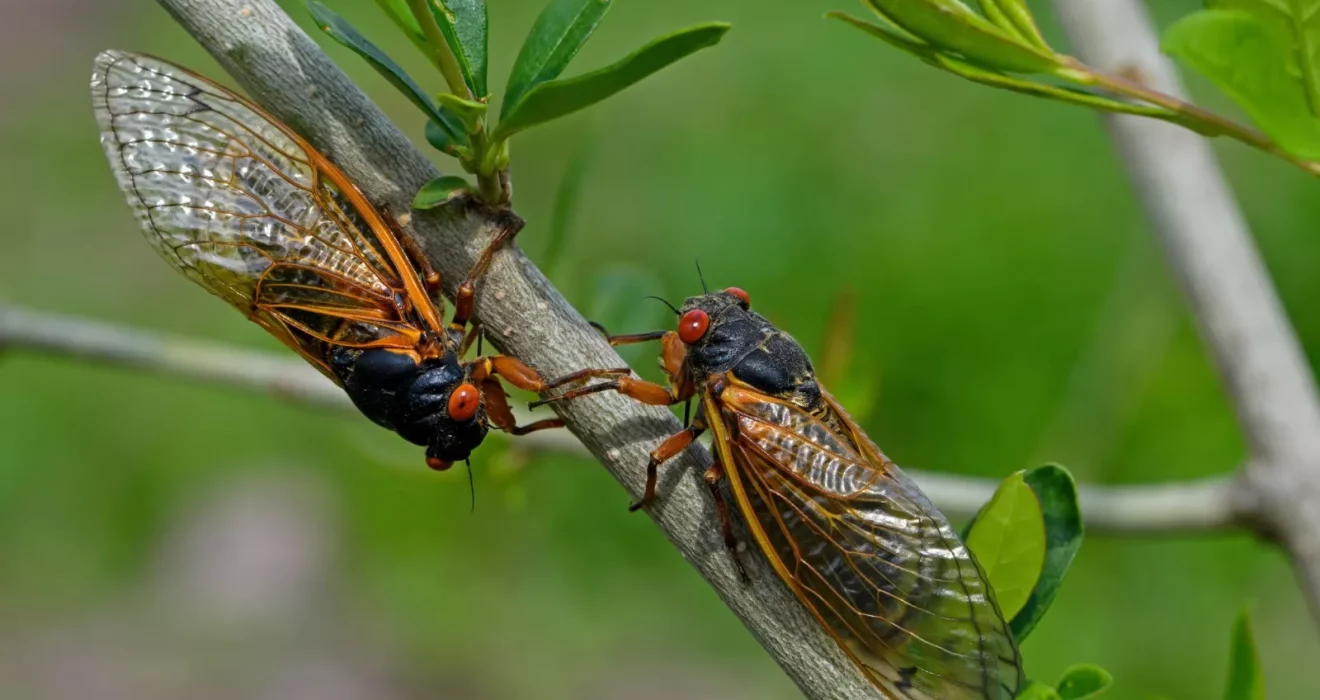In the anticipated spring of 2024, a mesmerizing natural spectacle is poised to captivate the United States, as billions of cicadas from two distinct broods prepare to emerge simultaneously. This exceptional event, marked by the synchronized emergence of both Brood XIII and Brood XIX, stands as a rare double-brood occurrence not witnessed since 1803. This phenomenon, capturing the fascination of scientists and enthusiasts alike, unfolds as these periodical insects, with their unique 13-year and 17-year cycles, synchronize their emergence, creating a once-in-a-lifetime event. The convergence of Brood XIII and Brood XIX adds historical significance to this entomological spectacle, promising a sensory experience that blends the rarity of nature’s timing with the marvels of cicada biology.
The 13-Year and 17-Year Cicada Cycles
Cicadas, intriguing creatures with either a 13-year or 17-year life cycle, lead a clandestine existence spending most of their lives underground nourishing themselves on tree roots. In the spotlight this spring are the distinct emergence cycles of Brood XIII and Brood XIX, with the former appearing every 13 years and the latter making its presence felt every 17 years. This convergence of cycles is a remarkable event, unfolding only once in every 221 years, making the simultaneous emergence of Brood XIII and Brood XIX in 2024 an exceedingly rare and truly once-in-a-lifetime spectacle. The intricacies of these synchronized cycles add an extra layer of wonder to the entomological world, underscoring the fascinating nature of these periodical insects and the precision of their biological clocks.
A Historical Perspective
Delving into the historical tapestry, the rarity of the impending double-brood phenomenon gains profound context by tracing its roots back to the presidency of Thomas Jefferson in 1803. The last documented instance of Brood XIII and Brood XIX emerging in synchrony paints a vivid historical backdrop, underscoring the temporal infrequency and unique nature of this phenomenon. As Thomas Jefferson navigated the challenges of his presidency, cicadas from these two distinct broods embarked on their simultaneous emergence, a spectacle witnessed only once every 221 years. This historical resonance imparts an additional layer of significance to the upcoming cicada event in 2024, casting it not only as a marvel of entomology but also as a rare chapter in the natural chronicles that aligns with moments in American history.
Geographic Distribution and Overlapping Territories
Brood XIII primarily emerges in the Midwest, with its epicenter in Illinois and extending into neighboring states like Wisconsin, Ohio, and Iowa. On the other hand, Brood XIX has a more extensive geographic distribution, covering areas such as Missouri, Illinois, Louisiana, North Carolina, Virginia, and Maryland. The fact that these two broods not only share a rare synchronicity but also happen to have adjacent territories with a narrow overlap in central Illinois makes this event even more remarkable.
The Cicada’s Life Cycle
The life cycle of cicadas unfolds as a fascinating narrative of periodicity and natural spectacle. These periodical insects, spending the bulk of their lives beneath the earth’s surface, diligently feed on tree roots. The cycle takes a dramatic turn after 13 or 17 years, depending on their brood, as the mature cicada’s tunnel to the surface. This emergence marks a pivotal moment in their lives, triggering a month-long, cacophonous mating ritual. In this spirited frenzy, cicadas embark on a relentless search for a mate, creating a noisy symphony that permeates the surroundings. Beyond being a mesmerizing spectacle for observers, this mating ritual serves as a crucial chapter in the cicada life cycle, ensuring the continuation of their species and further contributing to the intricate dynamics of nature’s cycles.
The Noisy Symphony of Mating
When cicadas emerge, they do so in massive numbers, and their mating frenzy is accompanied by a distinctive high-pitched buzz. This mating song, reaching up to 100 decibels, is roughly equivalent to the noise produced by a motorcycle or a jackhammer. The cacophony generated by billions of cicadas is not only a natural wonder but also a source of both fascination and annoyance for those in proximity.
A Long Wait for the Next Synchronized Emergence
As the cicadas of Brood XIII and Brood XIX embark on their synchronized emergence in 2024, it marks a momentous occasion that won’t repeat for another 221 years. Beyond this year, these two broods will resume their individual cycles, and their next simultaneous emergence is a distant event that future generations will have to patiently await. The implications of this rare phenomenon extend beyond entomological curiosity, offering a unique lens through which to appreciate the intricacies of nature’s timing.
Conclusion
In conclusion, the upcoming synchronized emergence of Brood XIII and Brood XIX cicadas in 2024 is a truly extraordinary natural event, blending historical significance with the marvels of entomology. As these winged insects take center stage in the Midwest and Southeast, their noisy mating ritual is sure to captivate observers, highlighting the intricate beauty of nature’s cycles and the rarity of events that unfold once in a lifetime.

